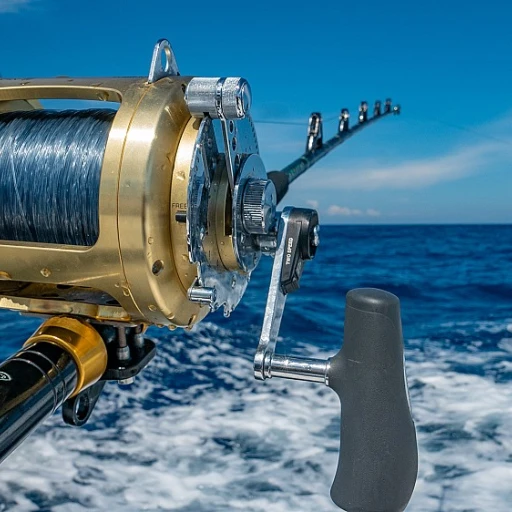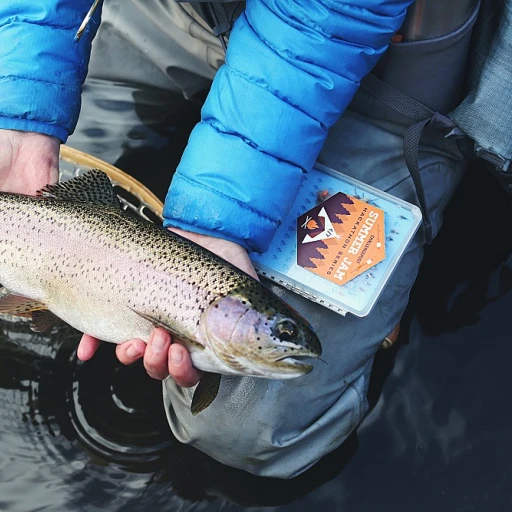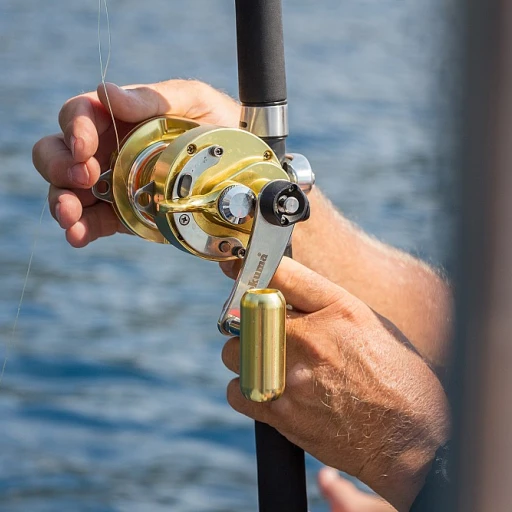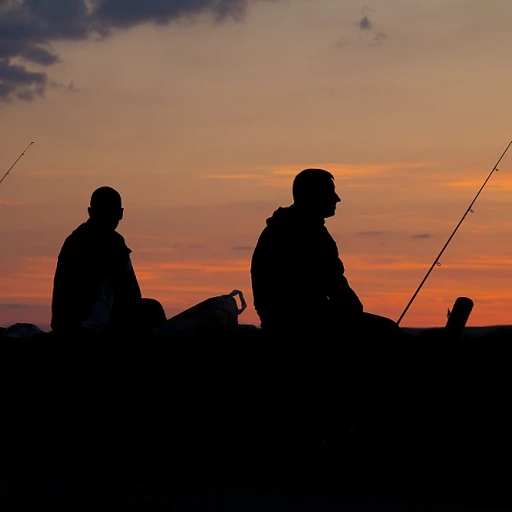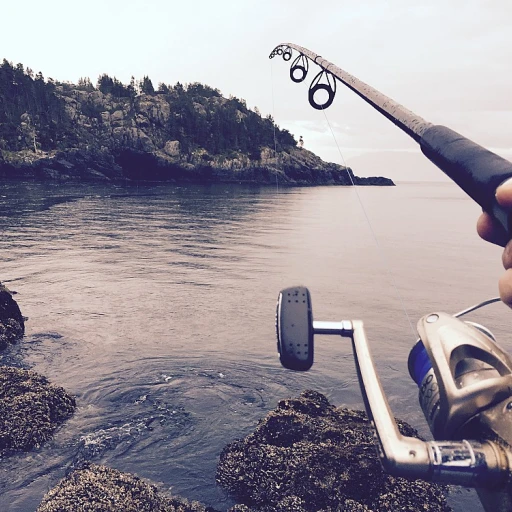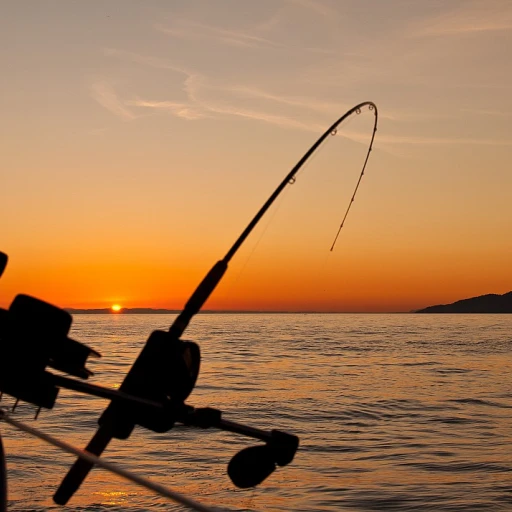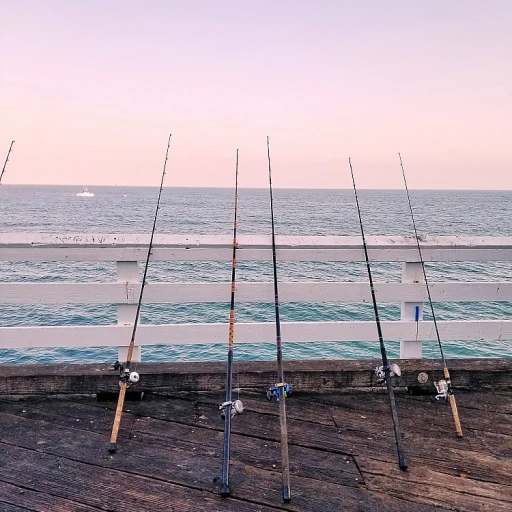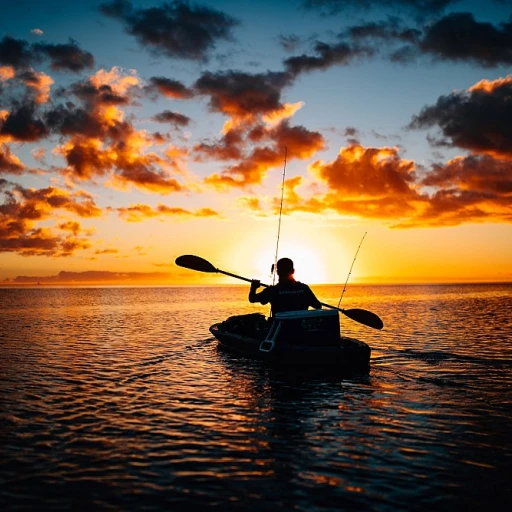
The legendary catch: David Prevost's record-breaking tarpon
David prevost's catch: the tarpon that made history
In the world of tarpon fishing, few names resonate as much as David Prevost. On a fateful day in 1982, off the shores of Louisiana's Grand Isle, Prevost reeled in what would become one of the most talked-about tarpons in fishing history. The beast weighed a staggering 283 pounds (128 kg) and stretched an impressive 96 inches from nose to tail. This catch blasted through the previous state and IGFA records, etching Prevost's name into fishing folklore.
How it all unfolded
It was a humid summer afternoon when Prevost and his friends set out in their small boat, not knowing they were about to make history. Equipped with trusty fishing tackle and a plan, they navigated the Gulf of Mexico's waters. Boasting a 130-pound test line, Prevost's gear was ready for a challenge. But nothing could prepare them for the giant lurking beneath the surface.
The battle in the water
After hours of trolling and waiting, the line finally went tight. The tarpon emerged, thrashing with raw power. The struggle lasted for an epic 80 minutes, with Prevost fighting the massive fish under the scorching sun. His determination and skill were put to the ultimate test. Finally, with sheer grit, he managed to pull the colossal tarpon close enough for the gaff.
Securing the record
The enormity of the catch wasn’t fully realized until they got back to shore and the fish was weighed. The scale stopped at 283 pounds, making it the biggest tarpon ever caught that year according to the International Game Fish Association (IGFA). This legendary catch still stands as a benchmark in the sport fishing community and has inspired many anglers to chase their own record-sized tarpon.
For another spectacular story of giant fish catches, check out our article on the biggest grouper ever caught.
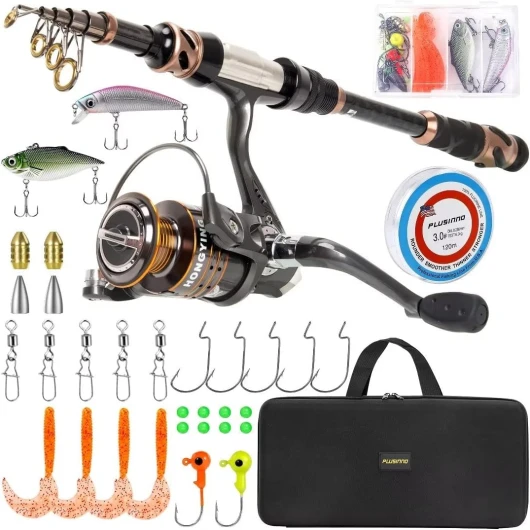
- + Carbon Fiber construction for lightweight and durability
- + Telescopic design for easy transport
- + 12 + 1 Shielded Bearings for smooth operation
- + Stainless Steel BB for rust resistance
- + Includes carrier case for storage
Understanding tarpon: The king of game fish
The ultimate game fish: understanding the majestic tarpon
Everyone who’s dipped a line in saltwater can tell you that when it comes to fish, few compare to the tarpon. Known for its acrobatics and strength, the tarpon, scientifically named Megalops atlanticus, is often crowned the king of game fish. So what makes this fish such a sought-after trophy for anglers worldwide?
The tarpon is a remarkable species, famous for its silver scales that can reach up to 35 inches in length. They’re part of the Elopidae family and can be found in the Atlantic Ocean, ranging from the coasts of Florida to the shallow waters of Bissau, West Africa.
Anatomy of a tarpon: built for performance
Weighing anywhere from 60 to over 280 pounds, tarpons are structured like torpedoes, enabling them to slice through water with ease. The largest tarpon ever caught was a monumental 286 pounds 9 ounces, a record held by David Prevost from Louisiana. This behemoth, caught in 2017, still stands as the IGFA world record for tarpon.
One distinctive feature is their swim bladder, which allows them to gulp air from the surface, giving them a significant advantage in oxygen-poor environments. This adaptation is crucial during long fights with anglers.
Habitat and behavior: where to find these giants
Tarpas are usually spotted in coastal shallows, estuaries, and brackish waters. During certain times of the year, they like to migrate and can be spotted in large schools in places like Florida’s Boca Grande Pass, known as the “Tarpon Capital of the World.”
They’re primarily nocturnal feeders, indulging in a diet of mullet, crabs, and shrimp. Tarpon often leap out of the water when hooked, creating an exhilarating experience for the lucky angler on the other end.
The thrill of the catch: personal stories from the waters
Every angler has a story, but some stand out more than others. Just ask Gus Bell, who reeled in a massive tarpon near Key West, Florida. Or Dr. Robert Borrego, who swears by the thrill of fighting these “silver kings” in the turbulent waters of the Gulf of Mexico.
Even David Prevost himself couldn’t believe it when he landed his record-breaking tarpon. Describing it as the catch of a lifetime, he recalled every second of the arduous battle, emphasizing the sheer adrenaline rush and the overwhelming awe of finally securing the record tarpon in his boat.
For more thrilling stories tailored for anglers, check out The Fascination of the Golden Bass: An Angler's Dream Catch.
The role of the International Game Fish Association (IGFA)
The significance of IGFA in the world of tarpon fishing
Founded in 1939, the International Game Fish Association (IGFA) has played a significant role in documenting and verifying the biggest catches worldwide, including the legendary tarpon (Megalops atlanticus). With its headquarters in Florida, the IGFA sets the standards for sport fishing records, ensuring that all submissions are legitimate and meet their strict criteria. This association is crucial for maintaining the integrity of record-breaking catches within the fishing community.
Setting and maintaining records
One of the primary functions of the IGFA is to validate fishing records. Anglers across the globe, including those who have caught massive tarpons like David Prevost, rely on the IGFA to authenticate their extraordinary feats. This involves a meticulous process, which includes weighing the fish on certified scales, documenting the catch through photographs, and often conducting interviews with witnesses. For tarpon's size, length, and weight, the IGFA's role cannot be overstated.
Large tarpon and IGFA standards
The IGFA also categorizes records by species, tackle used, and even by line test strength. For instance, Max Domecq's record of catching a tarpon weighing over 286 pounds was authenticated under the IGFA's criteria, standing as a testament to the association's comprehensive verification process. This level of scrutiny helps maintain fair competition and provides clear benchmarks for aspiring anglers.
Contributing to scientific data
Beyond record-keeping, the IGFA contributes to scientific data collection. Information from record-breaking catches often provides unique insights into fish populations, their sizes, and migratory patterns. For example, data collected from catches in the Gulf of Mexico or off the coast of Guinea-Bissau has broadened understanding of tarpon behavior across their range. Publications and research stemming from IGFA data help conservationists and marine biologists develop strategies to protect these majestic fish, ensuring the legacy of tarpon fishing is preserved for future generations.
Supporting ethical fishing practices
Possibly the most influential aspect of the IGFA's work is promoting ethical fishing practices. The organization encourages catch-and-release tactics, proper handling of fish, and adherence to regulations that protect species like the tarpon. These efforts are critical in fostering a sustainable fishing culture that respects the marine environment while still allowing anglers to pursue their passion.
For an in-depth look at another incredible record set in the fishing world, check out our biggest tuna ever article about the record-breaking giants of the sea.
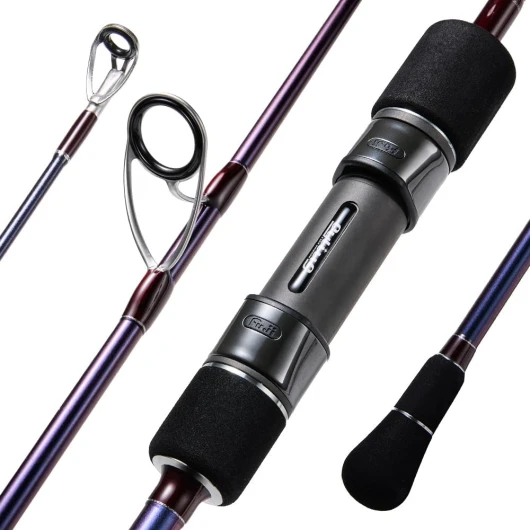
- + Lightweight design for easy handling
- + Durable Toray Carbon Fiber construction
- + Fuji Guides for smooth line passage
- + Compatible with spinning/casting reels
- + Split Rear High EVA Handle for comfort
Top locations for catching giant tarpons
Best places to catch monster tarpons
When you're set on landing a behemoth tarpon, certain locations around the globe have earned a reputation for yielding record catches. Renowned hotspots include Florida, Guinea-Bissau, and Colombia. These destinations are celebrated for their abundant tarpon populations and the potential to snag a trophy fish.
Florida
Florida, particularly the waters off Key West and Grand Isle, is legendary for its tarpon fishing. In fact, a massive tarpon weighing 243 pounds was caught here, setting a record that still stands. Florida remains a magnet for anglers chasing these 'silver kings'. The Gulf of Mexico waters, with their warm currents, are ideal for tarpon to thrive. This region is also the backdrop for many historical catches, including those recorded by the International Game Fish Association (IGFA).
Guinea-Bissau
Off the coast of West Africa, Guinea-Bissau, particularly near Bissau, is another hotspot. The waters here are fertile with both Atlantic and Pacific influences, creating a unique ecosystem where giant tarpon flourish. Notable fishing lodges like the Rio Indio Lodge are perfectly situated for anglers looking to set new records.
Colombia
The coastal waters of Colombia also offer prime tarpon fishing opportunities. The country's proximity to both the Atlantic and Pacific Oceans creates diverse habitats for tarpon. Anglers like Max Domecq have had significant success in these waters, further cementing Colombia's reputation.
Louisiana
Another prime location right here in the United States is Louisiana. Dr. Robert Borrego famously caught a mighty tarpon weighing just under 225 pounds off the coast of Louisiana. Gulf waters off Grand Isle are noted for their excellent conditions that support large tarpon.
In these regions, anglers employ various techniques and special tackle to enhance their chances of success. Whether you're a seasoned fisherman or an enthusiastic amateur, these destinations should be on your radar if you dream of hooking the biggest tarpon ever caught.
Tackle and techniques: How to catch a record tarpon
Choosing the right tackle for tarpon fishing
When it comes to landing a record-breaking tarpon, selecting the right tackle is crucial. The challenge begins with picking the ideal rod and reel. Most veteran anglers recommend a 50 to 80-pound test line to accommodate the sheer power of these magnificent fish. According to Dr. Robert Borrego, a well-known tarpon angler, "Your equipment needs to handle not just the weight, but the incredible fight tarpons put up, especially in the final moments."Proven techniques for a successful catch
There are countless strategies for reeling in that trophy tarpon. One essential technique includes using live bait like mullet or crab, which has proven highly effective in luring big tarpons. Fly fishing is another popular method, particularly in the Florida Keys and Biscayne Bay. Experienced anglers like Max Domecq swear by tarpon fly fishing for its thrill and precision. Domecq advises, "It's all about matching the hatch and using flies that mimic the natural prey of tarpon."Tips for maintaining your tackle
Your gear's condition can significantly impact your performance on the water. Regular maintenance, such as cleaning and lubrication, is paramount. "Never underestimate the importance of a well-maintained reel," says Jeff DeBlieux, who has numerous tarpon catches to his name. DeBlieux adds that saltwater can corrode your equipment quickly, making consistent care indispensable.Learning from the pros
Every tarpon angler has tips and tricks learned through years of experience. David Prevost, who holds the record with a 286-pound, 9-ounce tarpon, often shares insights on forums and at conventions. He insists that patience and persistence are vital: "There's nothing more rewarding than the moment you finally bring that giant to your boat, and all the hard work pays off." For those seeking more, it’s always beneficial to read about similar phenomenal catches like the world record perch.Notable anglers and their epic tarpon catches
David prevost and his legendary tarpon
David Prevost's monumental tarpon catch is still the chatter among fishing enthusiasts. It all happened off the coast of Guinea-Bissau, West Africa, where David landed a behemoth tarpon weighing 286 pounds, 9 ounces. Imagine that - a tarpon weighing as much as a fully grown adult human! This titanic fish earned its place in the fishing history books and remains a record that inspires today.
Spanning from the Atlantic to the Pacific, anglers like David Prevost have set the bar high. The story of his catch stands unparalleled, and it’s a reminder of why tarpon is revered among game fish.
Jeff deblieux: another name carved in tarpon fishing lore
Not far behind in the hall of fame is Jeff Deblieux. He reeled in a mammoth tarpon in the Gulf of Mexico, Grand Isle, Louisiana. His catch weighed an astounding 246 pounds, 0 ounces. Jeff's story spreads among anglers like wildfire, urging them to chase their own slice of glory.
Jeff and David share more than just their love for tarpon; their stories have lit a fire in thousands of anglers who dream of one day breaking their records.
Big catches often come from the unexpected
Ever heard of Gus Bell? He set a record with a 283-lb tarpon caught in Key West, Florida. Not to forget Dr. Robert Borrego, whose catch in Tarpon Springs, Florida, also made headlines. These tales highlight a crucial lesson for fishing enthusiasts: even the most unexpected waters hold the biggest surprises.
Max domecq: pushing the limits of tarpon fly fishing
Max Domecq’s adventure in the Rio Indio Lodge, Colombia, adds a unique flavor to tarpon fishing. Known for pushing boundaries in the sport, Max's feeding finesse and casting precision on fly tackle have made him a legend. His numerous big tarpons caught on a 20-pound tippet stand as an inspiration to fly fishing enthusiasts worldwide.
Legends come from hard work and dedication
What do David Prevost, Jeff Deblieux, Gus Bell, Dr. Robert Borrego, and Max Domecq have in common? Their dedication, skill, and a bit of luck have turned them into legends. These stories are a testament to the wonders of tarpon fishing, motivating anglers worldwide to dream big and fish even bigger.
Controversies and debates in tarpon fishing records
Record-keeping controversies: weighing in on the debates
In the world of tarpon fishing, the stakes are high, and so are the debates. Let's dive into some of the controversies surrounding record catches, and understand why these arguments are as persistent as a tarpon's fight on a line.
Accuracy of weight measurements
One of the most contentious points in the angling community is the accuracy of weight measurements. The International Game Fish Association (IGFA) sets out stringent requirements for weighing fish, but discrepancies arise. For instance, Dr. Robert Borrego's record tarpon catch in Florida weighed a staggering 243 pounds, but some critics argue that the weighing process wasn't flawless and add a twist of doubt to his record.
Disputed records
Another major debate revolves around the legitimacy of record claims. Max Domecq's tarpon, caught in Bissau, West Africa, almost overshadowed David Prevost's historic catch, but questions over the actual weight and conditions of the record-keeping have fueled arguments within the angling world. The boundary between celebrated achievement and disputed claims is often a thin line in tarpon fishing.
Catching methods and equipment
The methods and equipment used also spark heated discussions. Traditionalists argue that only certain types of tackle and line qualify for a legitimate record. On the other hand, modern anglers advocate for the recognition of innovative techniques, leading to a split in the fishing community. The argument isn't just about the biggest tarpon ever caught; it's also about how it was caught.
Conservation vs. record-setting
The clash between conservation efforts and record-setting pursuits forms another layer of controversy. While the IGFA and other conservation bodies stress the importance of sustainable fishing practices, some anglers prioritize capturing record-sized tarpons, sometimes at the expense of the fish's well-being. The challenge remains in balancing the thrill of record-setting with the responsibility of conservation.
Notable disputed records
Some notable anglers have found themselves embroiled in these debates. Jeff Deblieux and Gus Bell, both celebrated for their tarpon catches, have faced scrutiny over the legitimacy of their records. These controversies often cast a shadow over their impressive achievements and highlight the ongoing tension within the community.
The world of tarpon fishing is as much about the stories, rivalries, and controversies as it is about the actual catches. The biggest tarpon ever caught will always be a subject of fascination and debate, keeping the fishing community passionately engaged.
Preserving the legacy: Conservation efforts for tarpon
Conservation efforts: keeping the tarpon legacy alive
Despite the competitive spirit among anglers chasing the biggest tarpon ever caught, there's a strong emphasis on conservation efforts to ensure the survival of this remarkable fish. Overfishing and habitat destruction pose significant threats to tarpon populations, but initiatives led by experts and organizations aim to mitigate these impacts.
Organizations like the International Game Fish Association (IGFA) have been pivotal in promoting sustainable fishing practices. The IGFA works tirelessly to educate anglers about catch-and-release techniques, which are essential for preserving tarpon populations. According to the IGFA, more than 90% of tarpon caught in recreational fishing are released back into the water, a practice that has been crucial in sustaining their numbers (IGFA).
Advocacy and legislation: protecting tarpon habitats
In Florida, where many record-breaking tarpon are caught, state legislation plays a crucial role in conservation. The Florida Fish and Wildlife Conservation Commission (FWC) has implemented several measures to safeguard tarpon habitats. For example, the Boca Grande Pass, a renowned tarpon fishing spot, has specific restrictions during the peak tarpon season to minimize human impact.
Furthermore, many anglers are becoming advocates for conservation. Notable anglers like David Prevost and Max Domecq have publicly supported conservation efforts and educated the fishing community about the importance of preserving tarpon for future generations. Their influence helps bring attention to critical issues and promotes responsible fishing practices.
Research and monitoring: the key to understanding tarpon
Research initiatives are at the heart of tarpon conservation. Scientists like Dr. Robert Borrego from the University of Miami's Rosenstiel School of Marine and Atmospheric Science are conducting studies to better understand tarpon behavior and migration patterns. These studies help identify critical habitats and periods when tarpon are most vulnerable, informing management strategies that protect these magnificent fish.
Satellite tagging has emerged as a valuable tool in this research. By tracking tarpon movements, researchers gain insights into their spawning grounds and migratory routes, data that is essential for crafting effective conservation measures.
Community involvement: anglers making a difference
Community involvement is another cornerstone of tarpon conservation. Initiatives like the Bonefish & Tarpon Trust (BTT) engage anglers, scientists, and local communities in efforts to protect tarpon habitats. BTT's programs encourage anglers to participate in citizen science projects, contributing data that enhances our understanding of tarpon and helps shape conservation policies.
Tarpon fly fishing tournaments also promote conservation. Events like the Gold Cup Tarpon Tournament have incorporated conservation components, such as catch-and-release requirements and educational sessions on sustainable fishing practices. These tournaments not only celebrate the sport but also foster a culture of stewardship among participants.

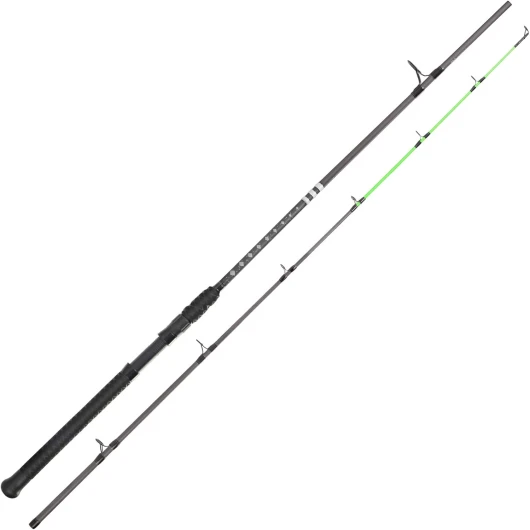
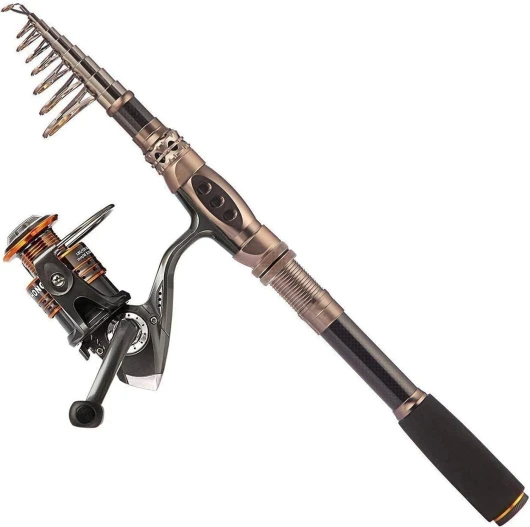
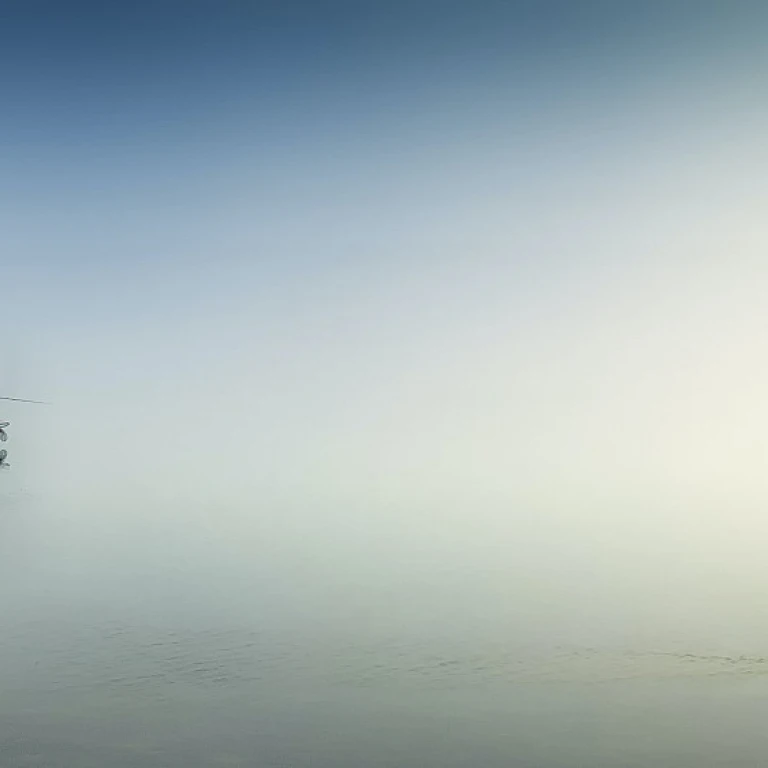


-large-teaser.webp)
